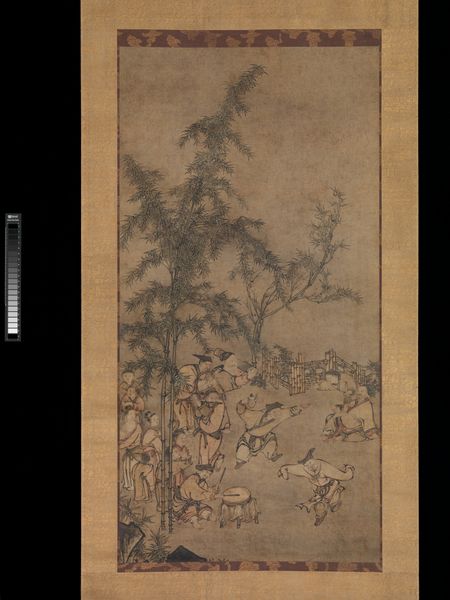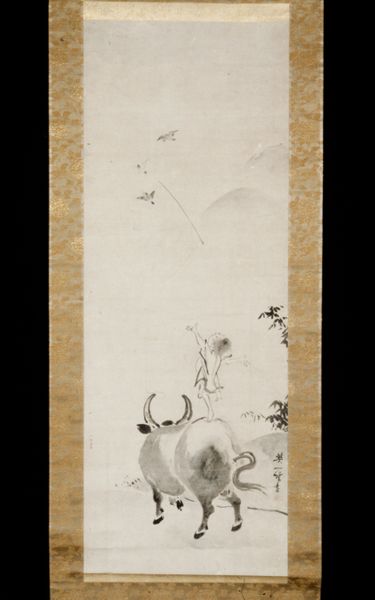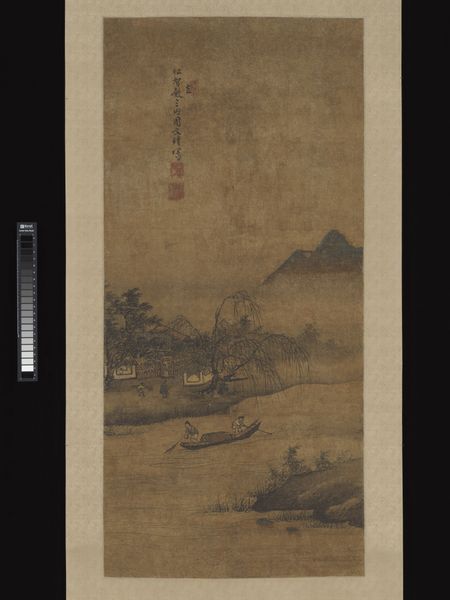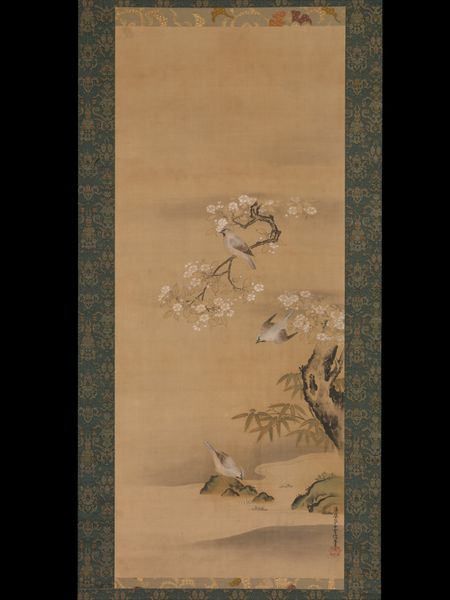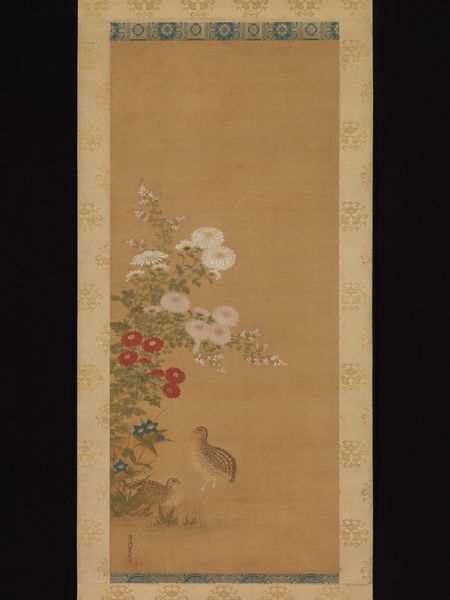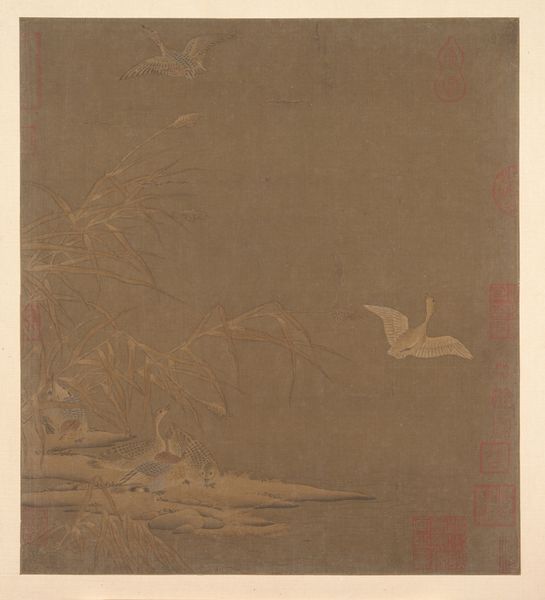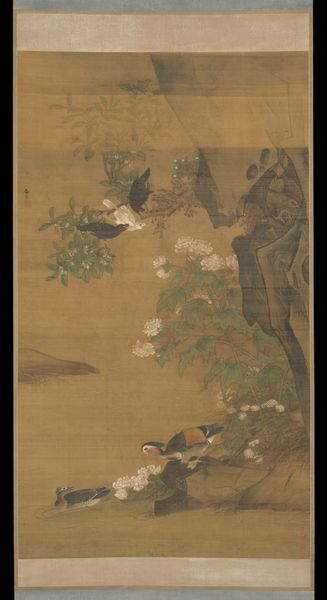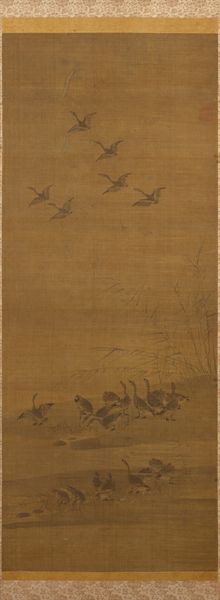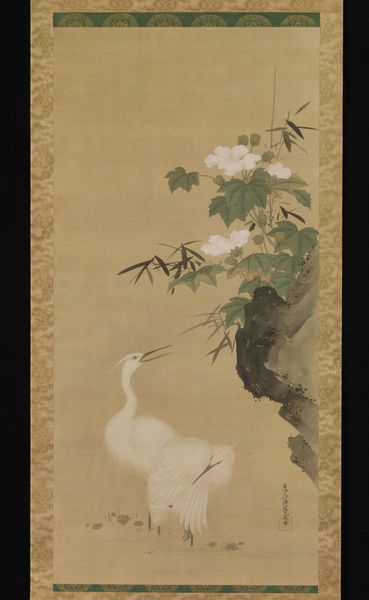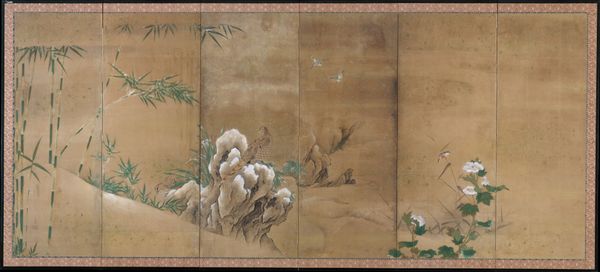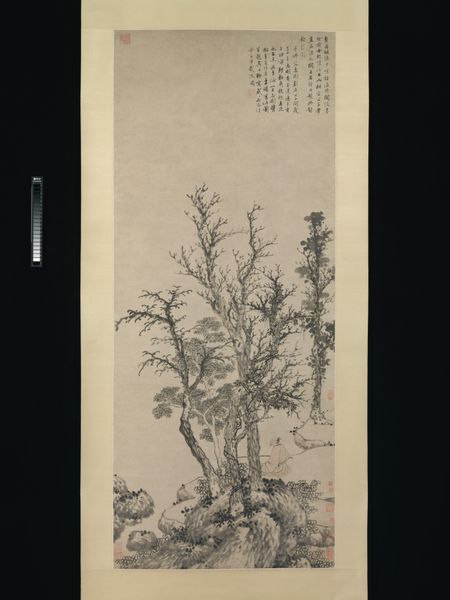
ink
#
fish
#
asian-art
#
landscape
#
flower
#
ink
#
earthy tone
#
china
#
muted tone
Dimensions: Image: 69 1/4 × 49 1/2 in. (175.9 × 125.7 cm) Overall with knobs: 8 ft. 6 7/8 in. × 54 in. (261.3 × 137.2 cm)
Copyright: Public Domain
Curator: Liu Jie, a court painter in China's Ming Dynasty, produced this tranquil image, Flowers, Fish, and Crabs, sometime between 1534 and 1566. Executed in ink on silk, it presents an intimate look at river life. Editor: The muted, earthy tones create such a sense of stillness. My eye is immediately drawn to the contrast between the sturdy crab scuttling near the foliage and the gentle sway of the river grasses. There's an ancient harmony in this scene, something both delicate and persistent. Curator: These "small world" paintings, often collected by scholars and officials, were appreciated for their realism and scholarly associations, placing natural elements into social discourse. Observe how the artist carefully arranged each element, drawing symbolic value. Editor: I agree. Water is so prevalent in this piece. Fish represent wealth and abundance, their swimming signifying a kind of fluid progression and freedom, while the crab, because of its hard shell, speaks to resilience and protection. Even the reeds carry the suggestion of nature’s enduring strength. Curator: Also notice the subtle positioning and interplay, all loaded with Confucian moral implications regarding governance. These works, while depicting nature, spoke to ideas concerning an emperor's virtues and right-ruling through societal harmony. Editor: Interesting to think of this microcosm reflecting larger social structures! Yet, independent of this reading, I think there is still a calming and inviting naturalism that moves one to contemplation. There's a dreamlike quality achieved, a meditative calm in rendering what the casual observer might deem just an everyday waterscape. Curator: That duality you are sensing, between social responsibility and private peace, was a very crucial intersection for the educated elite. Their collecting, patronage, and viewership played a role in spreading ideologies of power. Editor: What I find especially moving is its demonstration of beauty in simplicity; in everyday organic events; perhaps there is no need to struggle for abundance and it flows naturally if you remain in harmony with it. The longer I spend with it, the richer it becomes. Thank you. Curator: Indeed, Liu Jie and similar artists helped visualize and disseminate the core values of the elite. The painting reveals just how carefully orchestrated public images can be. Thank you.
Comments
No comments
Be the first to comment and join the conversation on the ultimate creative platform.

